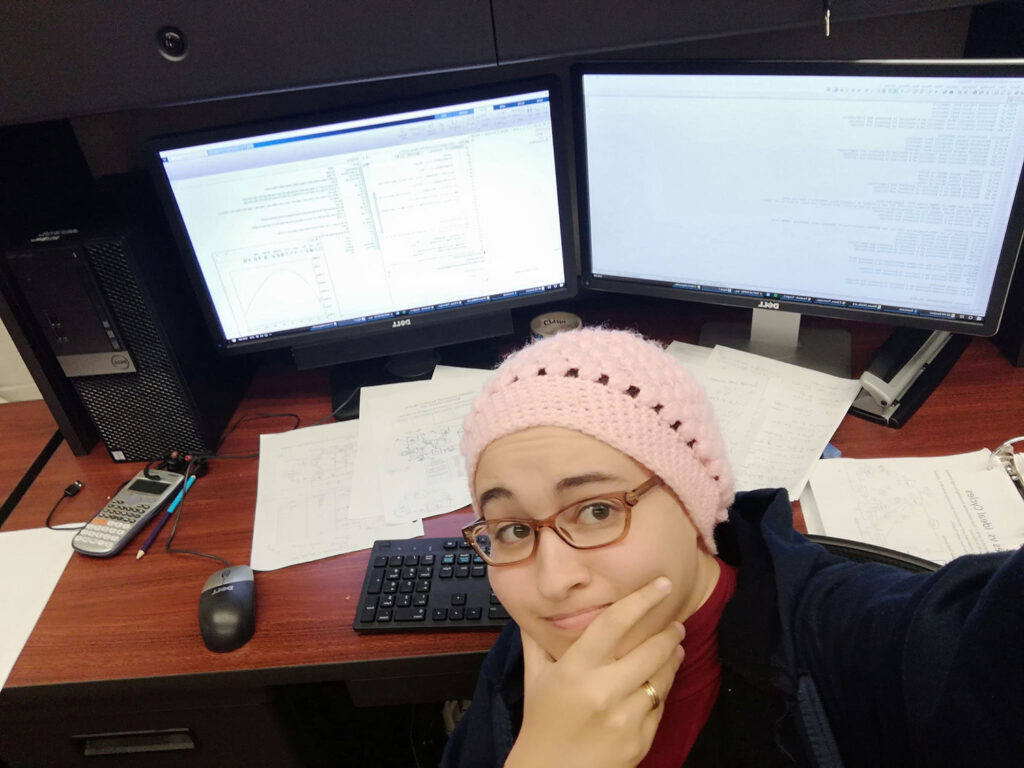Dina Osama Elsayed Elgewaily has plenty of advice for incoming Ph.D. students getting a degree in nuclear engineering.
First, stick with a nine-to-five work schedule. Second, respect the weekends. Elgewaily said she spent far too many nights early in her degree working until morning, and far too often she found herself working for long hours on a Saturday afternoon.
“Even while I was writing my thesis and preparing for my defense, it had already been ingrained in me that we’re not working after 5 p.m. and we’re not working on weekends, except for maybe half a day on a Saturday or something,” she said. “The weekend is the time to recharge.”

For Elgewaily, completing her thesis wasn’t the only academic achievement to come out of her Ph.D. In 2022, she co-authored a paper titled “Raman and XPS Analyses of Steam-Oxidized Silicon Carbide” with Professor of Nuclear Engineering and Director of the Nuclear Engineering Undergraduate Program Jacob Eapen.
Throughout the years, she presented her findings in multiple conferences, and is currently co-authoring several journal articles about her Ph.D. research.
She has also worked as a graduate research assistant since she started at NC State in January of 2019 and done several projects over the last five and a half years, including working on silicon carbide characterization post steam attack with Oak Ridge National Lab and another project on the mechanisms of transport and retention of different fission products into nuclear graphite with the University of Central Florida.
“Even with the use of AI or machine learning, the human part in the interpretation of the results and the validation of them will never go away.”
“The final project, which comprises over 70 or 80 percent of my thesis, was the porosity characterization of different grades of nuclear graphite,” she said. “Most of my work was on the characterization of virgin samples, in which I developed a new methodology to threshold the pore space of graphite.
“Porosity characterization in graphite has been ongoing for decades, but there was an inherent challenge in the accuracy of segmentation because of the low contrast between graphite and its pores when imaged by X-ray tomography,” she added.

This is what turned Elgewaily onto machine learning and artificial intelligence as a way to aid in nuclear engineering research. Machine learning has been used in phase identification and segmentation purposes in the medical field, and with computerized tomography (CT) scans and magnetic resonance imaging (MRI) scans. It was not specific to nuclear-engineering based medical applications.
Elgewaily successfully developed this methodology and validated its accuracy against well-documented studies of extensively researched grades, as well as its precision by applying it to three distinct samples from a grade known for its uniformity.
Having been at NC State since 2019, Elgewaily’s time in her program has been greatly impacted by the COVID-19 pandemic. The facility in which she was doing characterization was closed for a year. She spent much of this time analyzing her previous findings and delving deeper into literature on the subject.

She spent the first two and a half years of her Ph.D. taking classes, so the majority of her research results came about in the latter half of her program. It was during this time that she participated in extracurricular activities, like table tennis and chess, and she adopted her border collie and Australian Shepherd mix, Kiwi.
“I would say that my research only started actively producing results that we ended up using after I was done with my classes,” she said. “Before then, I was getting familiar with the testing techniques, familiar with how to research and how to do my literature reviews. So I was still a beginning Ph.D. student, garnering the skills needed to actually do research.”
She defended her research dissertation, “Porosity Analysis using Machine Learning and Ruthenium Diffusion in Nuclear Graphite Grades,” this past March, to co-advisors Eapen and Korukonda Murty, Progress Energy Distinguished Professor of Nuclear Engineering.
As for what’s next, Elgewaily recently moved to Italy and is job hunting for the next step in her career. She is also working on publishing a few journal articles that delves into AI, as per her Ph.D. research.
“Because our jobs are in the nuclear engineering field, the ultimate goal is to inform the designs, and the actual building of the components,” she said. “In nuclear applications, things are pretty high stakes. Even with the use of AI or machine learning, the human part in the interpretation of the results and the validation of them will never go away.”
This post was originally published in College of Engineering News.
- Categories:



